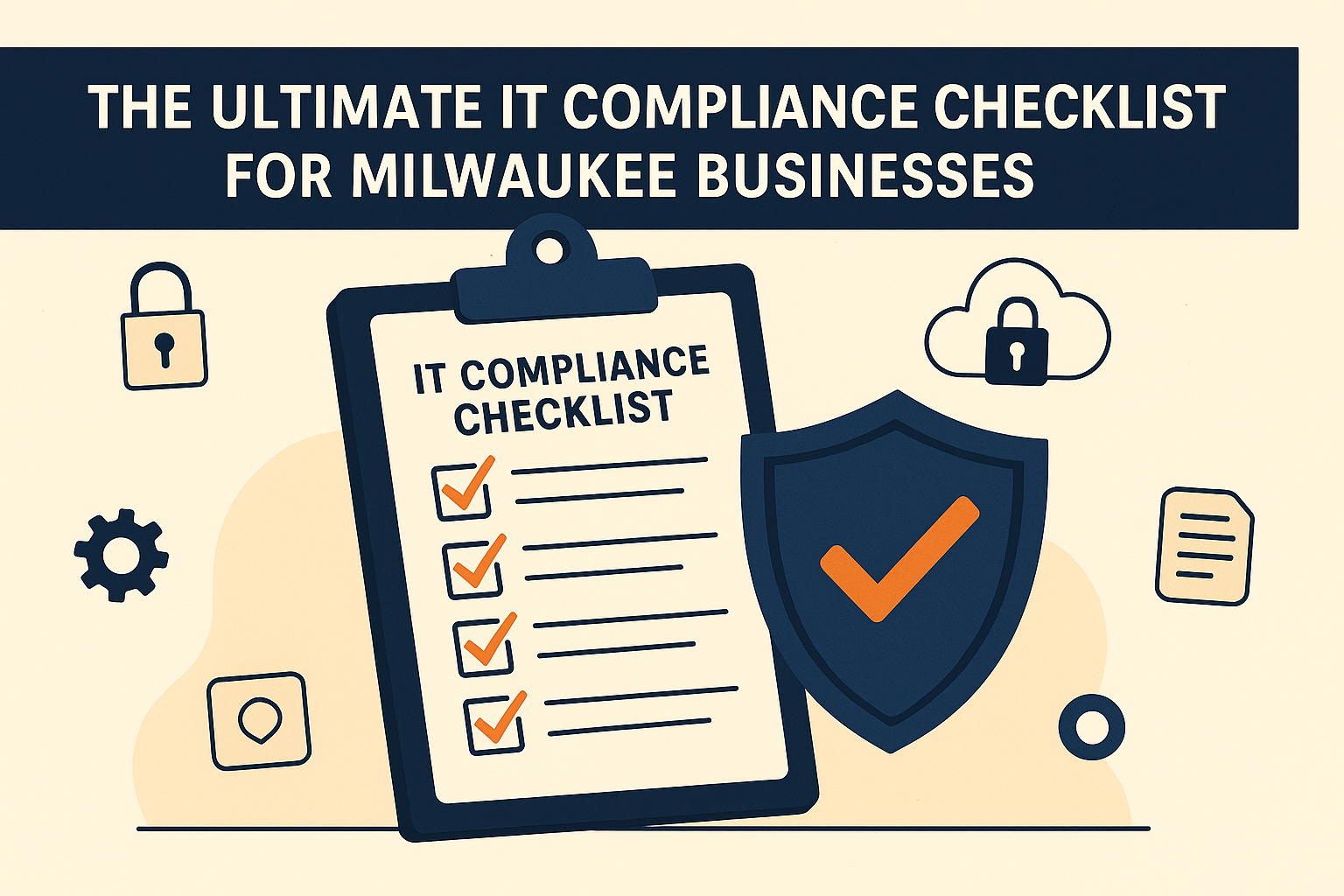CMMC 2.0: A Guide for DoD Contractors to Get Compliant Before the Deadline
If your business works with the Department of Defense (DoD)—whether as a contractor or a subcontractor—then you’ve likely heard about the updated cybersecurity standards known as CMMC 2.0. For companies in manufacturing or those providing vital services, it’s more important than ever to meet these new requirements before the looming deadline. If you don’t act soon, your business risks losing lucrative contracts and facing major disruptions. Let’s dive into CMMC 2.0 Compliance for DoD Contractors in this guide.
What is CMMC 2.0?
CMMC 2.0 stands for Cybersecurity Maturity Model Certification, and it’s designed to protect sensitive DoD data from cyberattacks. With the rise in cyber threats, especially targeting defense contractors, the DoD needed to put stricter rules in place. CMMC 2.0 has three levels, each requiring different security practices depending on how sensitive the information you handle is:
- Level 1 (Foundational): For contractors who handle less sensitive info (like basic DoD data), this level involves simple practices like using antivirus software and managing system access. It focuses on basic “cyber hygiene,” ensuring your company follows everyday security practices to keep data safe.
- Level 2 (Advanced): If you work with Controlled Unclassified Information (CUI), this level is for you. It’s based on NIST SP 800-171 guidelines and includes more detailed controls, like encryption and incident response plans, to safeguard sensitive DoD information.
- Level 3 (Expert): Reserved for the most critical DoD projects, this level involves extensive cybersecurity practices to protect against the most sophisticated cyber threats, aligned with NIST SP 800-172.
This new model simplifies things by trimming down from five levels (in CMMC 1.0) to three, making it easier for contractors to identify where they fit in and what they need to do.
Key Deadlines and Compliance Timeline
The official deadline to comply with CMMC 2.0 is set for October 2025, but don’t wait until the last minute. The DoD will start requiring CMMC compliance in contracts as early as 2024, meaning if you’re not compliant soon, you could lose out on critical business opportunities.
The transition timeline includes significant milestones such as:
- 2024: Early adoption in new DoD contracts will begin.
- Mid-2025: All contractors must show some progress toward compliance.
- October 2025: Full implementation across all contracts.
If you wait until the final deadline, you risk losing DoD contract opportunities, so starting early is crucial.
Being prepared now will not only protect your place in the DoD supply chain, but it also means you won’t be scrambling to meet the final deadline. For up-to-date information, the DoD has a dedicated CMMC resources page, so you can track important dates and new developments.
Why CMMC Compliance is Crucial for Your Business
Think of CMMC 2.0 as a security checkpoint for companies wanting to work with the DoD. If you don’t pass, you don’t get the job. Non-compliance can have some serious consequences:
- No more contracts: If your business fails to meet CMMC requirements, you won’t be able to bid for new DoD contracts, effectively locking you out of a key revenue stream.
- Fines and penalties: Misrepresenting your compliance status could lead to legal action or fines under the False Claims Act. It’s essential to ensure that you’re fully compliant at the right level before taking on new contracts.
The DoD is cracking down on cybersecurity because cyberattacks are more frequent and more dangerous than ever. For example, 60% of small businesses close their doors within six months of a cyberattack. You don’t want your business to become part of that statistic, especially when protecting sensitive government data is part of the job.
How Do CMMC Levels Affect Contractors and Subcontractors?
Each level of CMMC 2.0 targets specific types of contractors, depending on what kind of data you handle:
- Level 1 (Foundational): This level covers basic practices like using antivirus software and managing access to your systems. It’s essential to maintain “basic cyber hygiene,” which means making sure everyone in your company is following common-sense security rules. Skipping these basics can be a huge risk, as shown in a lawsuit where poor security left a contractor exposed to cyberattacks.
- Level 2 (Advanced): If your company handles CUI—more sensitive information—this level applies to you. You’ll need to meet the stricter requirements of NIST SP 800-171, which includes encryption, access controls, and incident response systems. These safeguards are designed to protect important data and ensure you can quickly address security breaches.
- Level 3 (Expert): This is for contractors working with the most sensitive DoD data, and it involves extremely high-level security measures to defend against advanced threats, such as nation-state actors.
Each level of compliance corresponds to how sensitive the data is that you handle, so make sure you’re prepared based on your specific needs.
How to Get Started: The Self-Assessment and Gap Analysis
Before you can get certified, you need to figure out where your company stands now. This means conducting a self-assessment for Level 1 or planning a more detailed third-party assessment for higher levels.
Start with a gap analysis, which compares your current cybersecurity practices with what CMMC requires. This will help you identify where you’re falling short and what you need to fix. For example, NIST SP 800-171 has 110 security practices that Level 2 contractors need to follow, ranging from access controls to encryption, and these gaps can be costly if not addressed.
For detailed steps on conducting internal assessments, refer to the DFARS 252.204-7019 requirements, which outline the DoD’s expectations for contractors.
Challenges Contractors Face in Meeting CMMC Requirements
Many small and mid-sized businesses find the compliance process overwhelming. Some of the common challenges include:
- Limited resources: Smaller businesses may not have a full IT team dedicated to cybersecurity, making it harder to implement necessary changes.
- Complex regulations: Navigating all of the requirements, especially at higher levels, can feel like trying to decode a foreign language. Without proper guidance, it’s easy to miss important steps.
- Time constraints: With deadlines approaching, many companies feel the pressure to comply quickly but may not know where to start.
This is why many contractors partner with managed service providers (MSPs) to help navigate the compliance maze.
How MSPs Can Help With Achieving CMMC Compliance
Managed Service Providers (MSPs) can play a crucial role in helping your business meet CMMC standards. MSPs offer a range of services, from performing initial gap analyses to implementing cybersecurity solutions that meet DoD requirements. However, it’s important that you work with an MSP who is also a CMMC DoD contractor and understands all the intricacies of the certification process and requirements.
Partnering with an MSP can significantly reduce the burden on your in-house team, allowing you to focus on your business while experts handle your compliance needs. MSPs also provide ongoing monitoring and updates to ensure you remain compliant over time, even as new threats and regulations emerge.
Cybersecurity Best Practices to Help You Get Compliant
To prepare for your CMMC 2.0 assessment, start by implementing these key cybersecurity practices:
- Access Control: Ensure that only authorized personnel have access to sensitive systems and information.
- Antivirus and Malware Protection: Regularly update and monitor antivirus software to protect against threats.
- Encryption: Encrypt sensitive data both when it’s stored and when it’s sent to other systems.
- Incident Response Plan: Develop a detailed plan for how your business will respond in the event of a data breach or cyberattack.
By following these steps, you’ll not only be on the right path toward compliance, but you’ll also enhance your company’s overall security posture.
What Does CMMC Compliance Cost?
Compliance costs vary depending on your CMMC level. For Level 1, the costs are relatively low since you can self-assess, but as you move up to Levels 2 and 3, you may need to invest in:
- Cybersecurity tools and infrastructure upgrades.
- Training and certifications for your employees.
- Third-party assessments for the higher levels.
While these costs can add up, failing to comply can be much more expensive, especially if you lose out on lucrative DoD contracts or face penalties.
Next Steps: Start Preparing for CMMC Now
The clock is ticking toward the October 2025 deadline, but CMMC requirements will start appearing in contracts as early as 2024. If your business wants to stay competitive in the DoD supply chain, you need to start preparing now.
Our team specializes in helping businesses like yours meet CMMC 2.0 standards. Contact us today for a free initial consultation, and we’ll help you develop a tailored plan to ensure you’re ready well before the deadline.
Taking action now will safeguard your business’s future and ensure you can continue to work with the DoD on critical projects.



